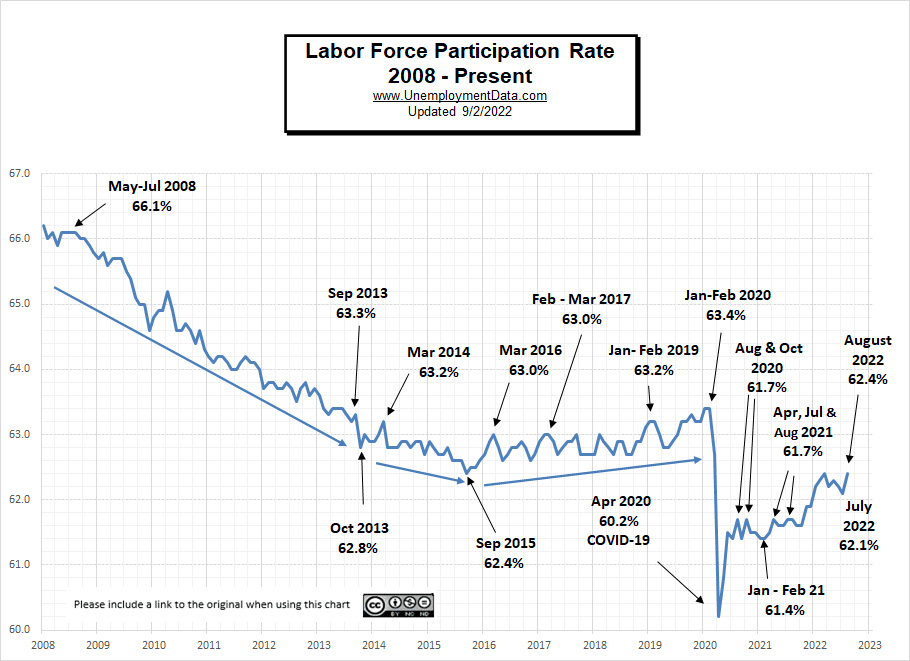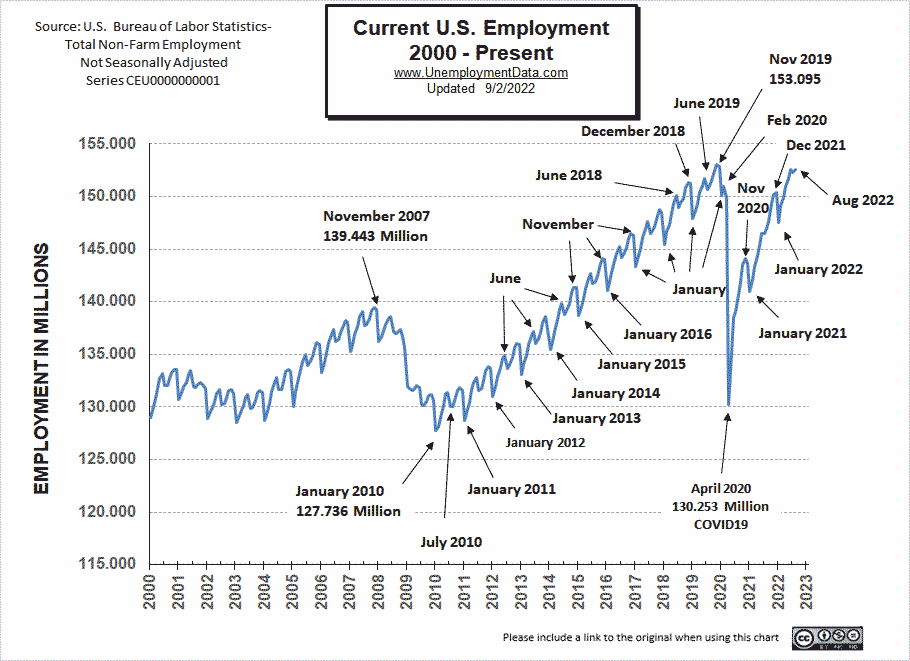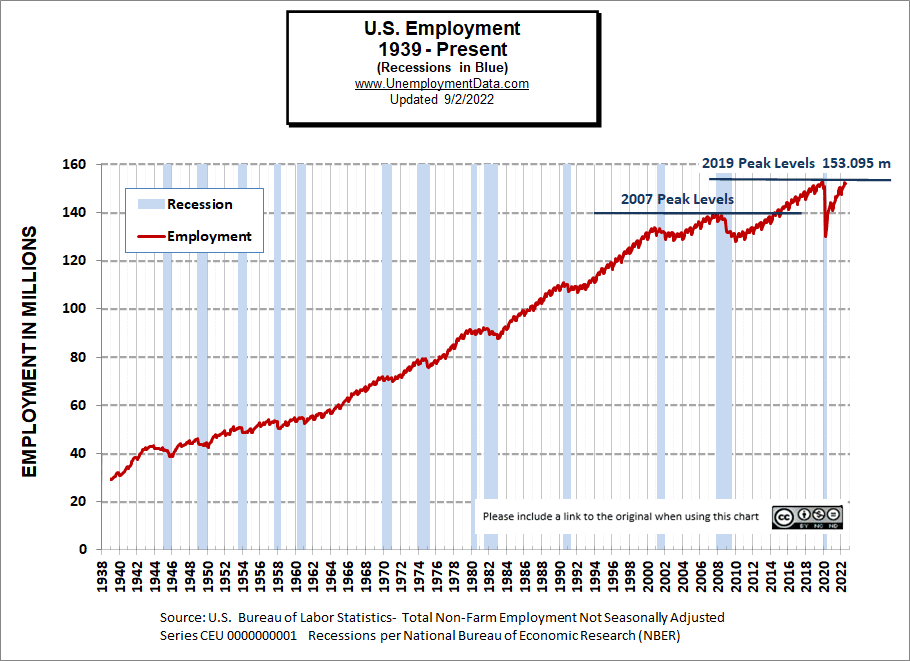The U.S. Bureau of Labor Statistics (BLS) released its employment / unemployment report for August on September 2nd.
![]()
- Unadjusted Employment rose from 152.263 million to 152.572
- Labor Force Participation Up from 62.1% to 62.4%
- Adjusted U-3 was Up from 3.5% to 3.7%
- Unadjusted U-3 was Unchanged at 3.8%
- Unadjusted U-6 was Down from 7.2% to 7.0%
Looking Back:
In June, we reported a few Early Indicators of a brewing recession.
- Labor Force Participation Down from 62.3% to 62.2%
- Upturn in Uneducated Unemployment
- Rising Unemployment among the newly unemployed
- Average Weekly Hours among manufacturing workers falling
Since then, the BLS has changed the employment numbers for June from an initial 152.692 million for June. They adjusted down to 152.634 million in July and then down to 152.607 in August. So, a total of 85,000 jobs disappeared for June.
July’s Indicators
Originally they reported employment of 152.249 million jobs for July. They have adjusted that to 152.263 million , which is an increase of 14,000 jobs. For August, they are currently reporting 152.572 million, an increase of 323,000 based on their original estimates or an increase of 309,000 based on their updated numbers.
But… August employment is still below June’s employment no matter which number for June they use.
On the Bright Side
Labor Force Participation is Up to 62.4% where it peaked in March.
In the News:
Trying to put a good spin on rising unemployment US. News says:
Lower US Job Gain in August Could Aid Fed’s Inflation Fight
The NY Times is beating the same drum:
Job Market Cooled but Was Still Strong in August
The monthly employment report suggested that the Federal Reserve might be able to tame inflation without causing a recession.
CNN follows along:
Yes, the unemployment rate rose. Here’s why that’s good news
ADP National Employment Report
In addition to the BLS, we can look at the Jobs Report generated by private companies like ADP Research Institute. According to their numbers, August employment was up 132,000 not the 300,000+ that the BLS reports.
- Private employers created 132,000 jobs in August, a step down from the month before, when the economy created nearly 270,000 jobs. Payroll growth also slowed in July when compared to June of this year.
About the ADP Report:
The ADP National Employment Report is an independent estimate of the change in U.S. private sector employment and pay derived from actual, anonymous payroll data of client companies served by ADP, a leading provider of human capital management solutions. The report is produced by ADP Research Institute in collaboration with the Stanford Digital Economy Lab. The ADP National Employment Report is broadly distributed to the public each month, free of charge, as part of the company’s commitment to offering deeper insights of the U.S. labor market and providing businesses and governments with a source of credible and valuable information.
Current Employment
According to the Commissioner of the U.S. Bureau of Labor Statistics:
“Nonfarm payroll employment increased by 315,000 in August, and the unemployment rate rose to 3.7 percent. Notable job gains occurred in professional and business services, health care, and retail trade. Total nonfarm employment increased by 5.8 million over the year, as the labor market continued to recover from the job losses of the pandemic-induced recession. This growth brings total nonfarm employment 240,000 above its February 2020 level before the onset of the coronavirus (COVID-19) pandemic.”
You can read the full BLS report here.
As usual, they are talking about “Seasonally Adjusted Jobs” from the “Household Survey” rather than looking at the results reported by actual companies in the BLS “Establishment Survey”.
Employment is approaching the 2019 peak, although the population is now several million higher.
Historical Employment with Recessions
[Read more…] about August: Employment and Labor Force Participation Up




